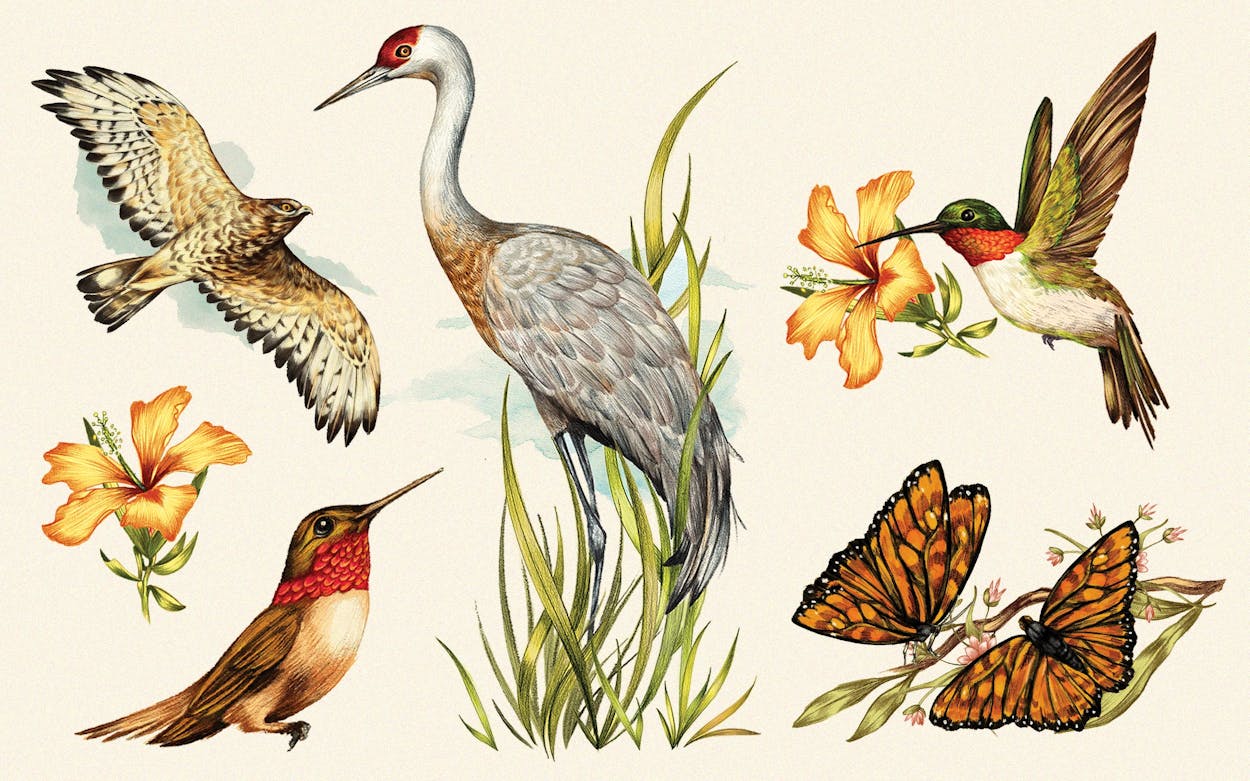Texas, it has long been said, is a crossroads—of peoples and cultures, of course, but also of geographies. The state’s sheer breadth, from the hulking mountains of West Texas to the grassy plains of the Panhandle to the swamps of the Big Thicket, means that it encompasses almost every kind of landform and habitat in the Western Hemisphere. And with that comes a grand diversity not only of flora and fauna but also of movement—comings and goings, meetings and partings, as seeds and birds and animals are carried upon our winds, ushered along our waters, and sustained by our soil.
These currents of movement are especially majestic during late summer and fall, when members of the animal kingdom swing into and across Texas on seasonal migrations. As the last of their young are born, as they band together to nest and rest, as they journey in preparation for winter, these hundreds—or thousands, or millions—of creatures offer a lavish display of life that is worth seeing, and admiring, up close. So make plans now: pull out the calendar, grab some binoculars, and set out in search of nature’s pilgrims, whose beauty and patterns will awaken a sense of ancient memory. “The lives of many animals are constrained by the schemes of men,” writes naturalist Barry Lopez in his classic, Arctic Dreams, “but the determination in these lives, their traditional pattern of movement, are a calming reminder of a more fundamental order.” Let the following guide be your starting point.
Sandhill Cranes
Cranes, says the great birding outfitter Victor Emanuel, are an enduring symbol of wilderness around the globe. He should know: after forty years of leading birding trips worldwide, the Austin-based ornithologist has managed to see almost all fifteen crane species. Of those, the sandhill is his favorite. Considered one of the oldest surviving bird species and prized by some hunters, sandhills—specifically the subspecies known as lesser sandhill cranes—congregate in spectacular numbers every winter in the Panhandle, especially at Muleshoe National Wildlife Refuge, northwest of Lubbock, which often plays host to the nation’s greatest concentration of them.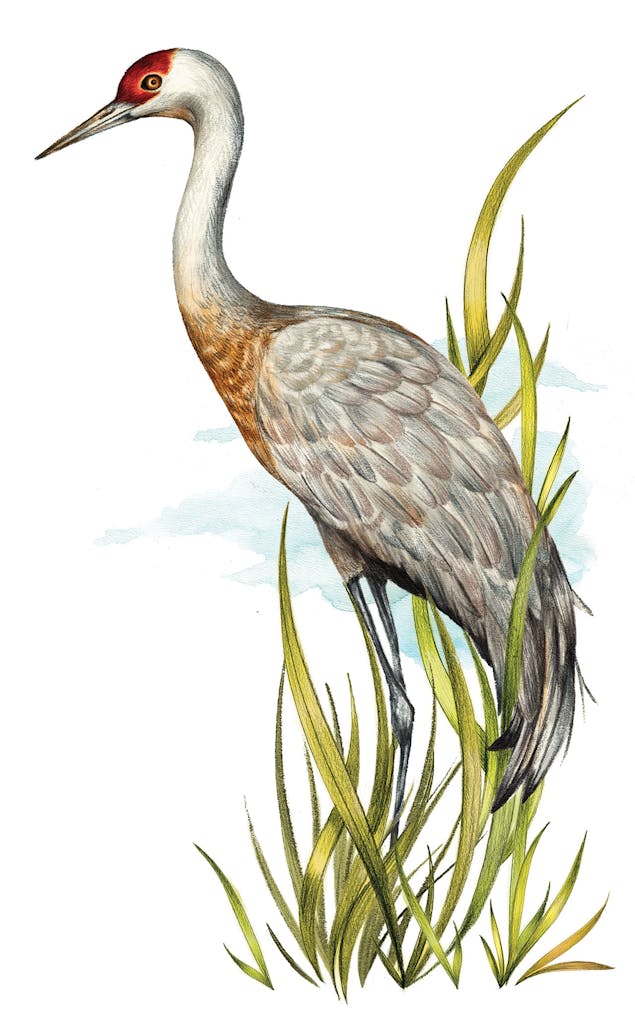 Arriving from the arctic in flocks that range from 2 to 200 birds, lesser sandhill cranes amass together until tens of thousands can be seen across the grassland prairie on the 6,440-acre refuge. (A record estimated 250,000 birds gathered there in 2005.) Though a few hundred continue south, into the Gulf of Mexico, you’ll find the majority resting and feeding in the roadside wheat and cotton fields from Muleshoe all the way to Amarillo, a breathtaking show of gray and ochre plumage and scarlet crowns. Long-legged, with black beaks and elegant wingspans, the cranes are worth seeking out for their mating dances, gangly choreographies of fluttering pirouettes and leaps along the water’s edge, their rattling bugle calls a coordinated sound track that can carry for several miles.
Arriving from the arctic in flocks that range from 2 to 200 birds, lesser sandhill cranes amass together until tens of thousands can be seen across the grassland prairie on the 6,440-acre refuge. (A record estimated 250,000 birds gathered there in 2005.) Though a few hundred continue south, into the Gulf of Mexico, you’ll find the majority resting and feeding in the roadside wheat and cotton fields from Muleshoe all the way to Amarillo, a breathtaking show of gray and ochre plumage and scarlet crowns. Long-legged, with black beaks and elegant wingspans, the cranes are worth seeking out for their mating dances, gangly choreographies of fluttering pirouettes and leaps along the water’s edge, their rattling bugle calls a coordinated sound track that can carry for several miles.
When & Where To Go:
Mid-October to February. Muleshoe National Wildlife Refuge lies between the towns of Muleshoe and Morton, an hour northwest of Lubbock, on Texas Hwy 214. Look for lesser sandhills around the refuge’s shallow lakes, known as playas, which the birds rely on for roosting (you’ll catch them at their most impressive numbers at dawn or at dusk), or keep an eye on the surrounding stubble-ridden fields, where they like to feed. The refuge is open 24 hours, year-round. No entrance fee. Call ahead for the latest updates (806-946-3341, fws.gov/refuge/muleshoe).

Mexican Free-Tailed Bats
Thanks to the efforts of the fine folks at Bat Conservation International, the Austin-based organization that has championed the world’s only flying mammal since the early eighties, the popular perception of bats—as rabies-infected bloodsuckers intent on getting tangled in your hair—has largely mellowed. This is famously the case in Austin, of course, where thousands of migratory Mexican free-tailed bats began making their summer home beneath the Congress Avenue Bridge after a reconstruction project in 1980 left the bridge with roost-worthy gaps. The creatures, originally considered a nuisance, were touted by BCI for their value—as pest-control agents, pollinators of native plants, and purveyors of guano, a nitrate-rich fertilizer—which persuaded the city to finally embrace its roughly 1.5 million pointy-eared winged guests.
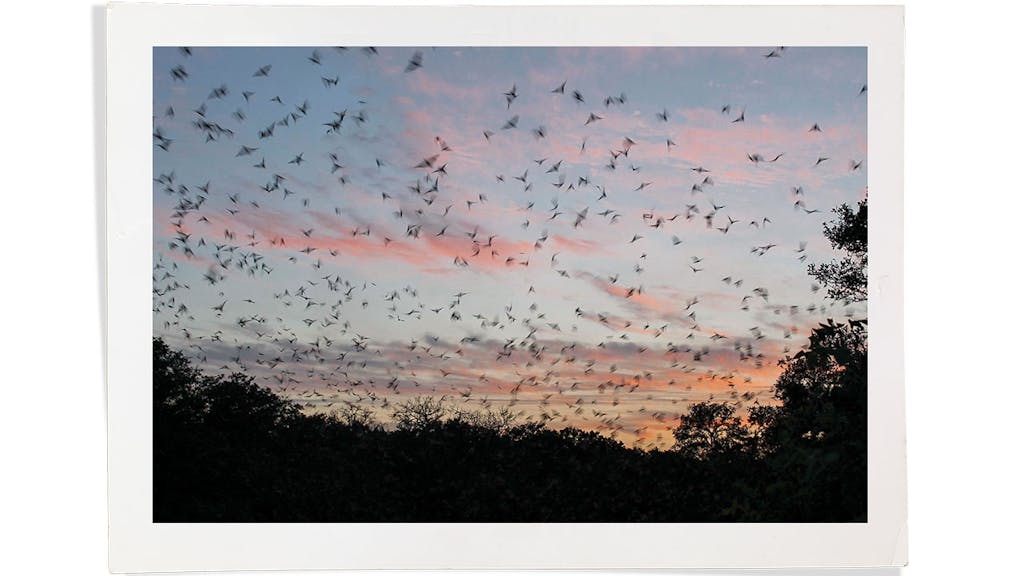
But that number is not nearly as impressive as the 20 million Mexican free-tailed bats that congregate just an hour away at Bracken Cave, about thirty miles northeast of San Antonio. There you’ll find the largest bat colony in the world, period, and one of the largest assemblages of mammals found anywhere on earth. After mating in Mexico, female bats head north to bear their young in the warm, humid incubator that is Bracken Cave, packing into its walls with staggering density (up to five hundred bats per square foot). BCI bought the land on which the cave is located in 1992 and later partnered with the City of San Antonio and the Nature Conservancy in 2014 to prevent suburban growth in the area; as a result, the cave now offers a front-row seat to one of the most stunning, undisturbed nature shows in Texas. At sunset during mid-to-late summer, the bats emerge with their newly fledged youngsters for a nightly feeding. The exodus lasts several hours, an upward, whirring spiral of wings that splashes out into the colored sky like an inky current.
When & Where To Go:
July and August. Bracken Cave is on a 697-acre property between New Braunfels and San Antonio, off FM 3009. Access is managed by BCI, which limits viewings to members; go to its website to become a member and reserve a spot (batcon.org; memberships start at $30). While you’re in the Hill Country, you can also check out the bat nursery at Bamberger Ranch Preserve (bambergerranch.org) and the three-million-strong nightly bat “tornado” at Devil’s Sinkhole State Natural Area (tpwd.texas.gov/state-parks/devils-sinkhole).
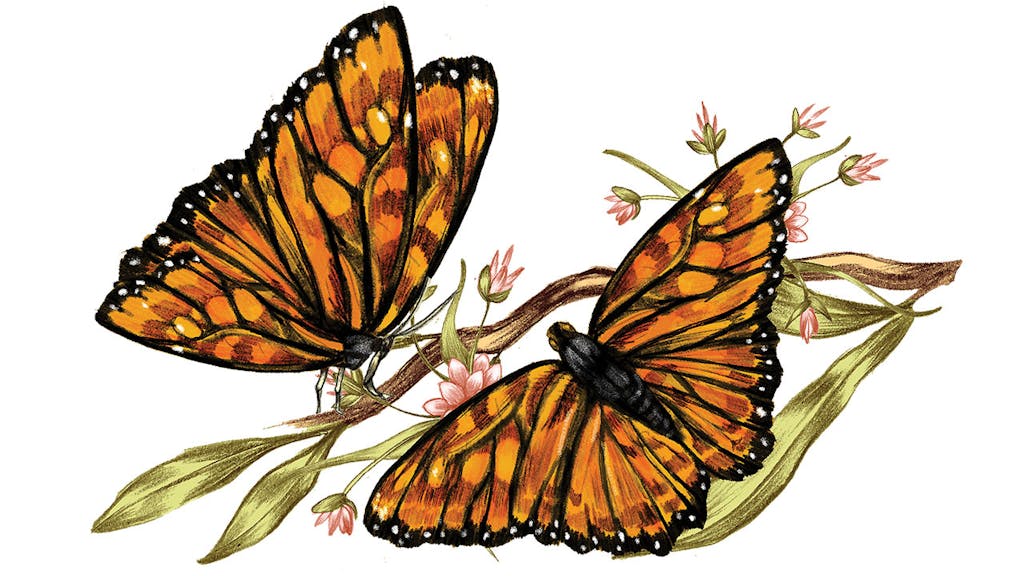
Monarch Butterflies
The metamorphosis of the butterfly, from soft-bodied caterpillar to floating beauty, awakens all but the most coldhearted observer to the magic of nature. Pile on the rainbow variety of some 300 species found in Texas—from the bright-orange coat of the Gulf fritillary to the diaphanous lavender wings of the great purple hairstreak to the beagle-like blotches of the yellow-and-black southern dogface—and you’ve got a palette that even Crayola couldn’t compete with. The most familiar is the monarch, whose fleets of black and orange head north across Texas each spring and back south into Mexico each fall. Though an estimated 150 million monarchs pass through Texas, this is a fraction of earlier migrations: urban development in the past two decades has meant a loss of habitat and a dramatic decimation of the 1 billion butterflies that once graced the skies. Instead the monarch is now being considered for endangered-species status, and last year President Obama introduced a plan to help restore the butterfly’s food sources—milkweed and nectar-producing flowers—on land along Interstate 35, a known monarch flyway, with the goal of boosting numbers by 225 million.
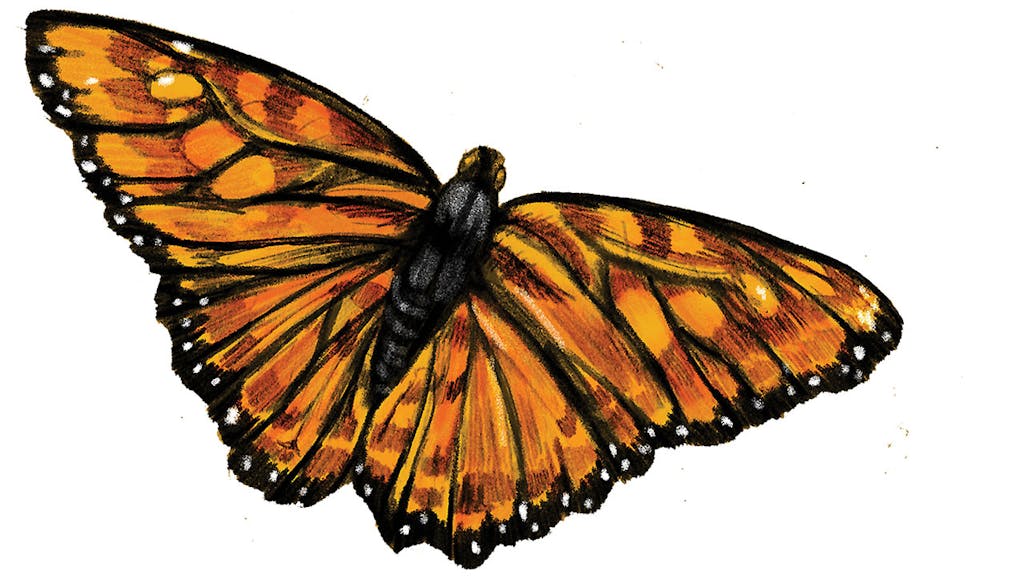
In the meantime, one of the best places to revel in the sight of monarchs is at the one-hundred-acre National Butterfly Center, in Mission, which sees clouds of them descend upon its grounds every fall, alighting on trees and bushes in pulsating, colorful clusters. The temperate climate and geography of the Lower Rio Grande Valley mean that you’ll also be able to catch all manner of other resident and migratory butterflies—at least 228 species, in fact—in what is a luminous wonderland of wings. (One recent sighting included the zebra cross-streak, a black-and-white-striped butterfly usually found south of the border.) “It’s almost like a wilderness safari,” says Marianna Treviño-Wright, the center’s executive director. “And, unlike birding, butterflying is nice because you don’t have to get up at the crack of dawn.”
When & Where To Go:
October and November. The National Butterfly Center is open every day, with fall hours of 8–5 (3333 Butterfly Park Dr, 956-583-5400, nationalbutterflycenter.org). Consider a trip to coincide with this year’s Texas Butterfly Festival (October 29–November 2), which features guided field trips, photo workshops, and exhibits (texasbutterflyfestival.com). You can also sign up for a butterfly walk at nearby Estero Llano Grande State Park (956-565-3919, tpwd.texas.gov/state-parks/estero-llano-grande).
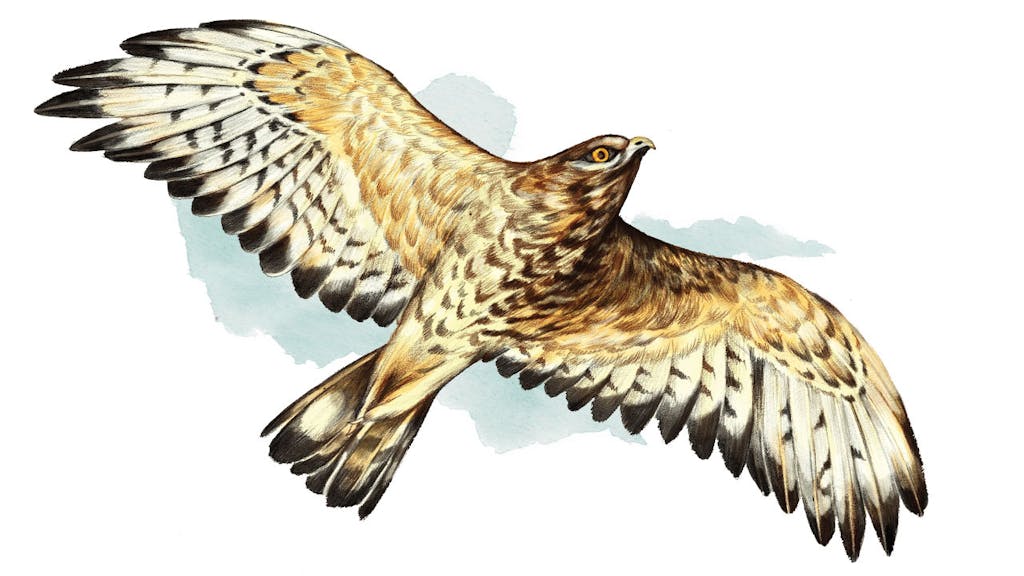
Broad-Winged Hawks
Maybe you’ve glanced out of the window and seen there, on the lawn, a bloody great hawk murdering a pigeon, or a blackbird, or a magpie, and it looks the hugest, most impressive piece of wildness you’ve ever seen, likesomebody’s tipped a snow leopard into your kitchen and you find it eating the cat. Though the broad-winged hawks that form enormous, circular flocks over Texas on their way to South America will not likely alight in your backyard in the way Helen Macdonald described in her 2014 best-seller, H Is for Hawk, her words capture the predatory, preternatural charm of these raptors all the same. Indeed, the stocky birds with reddish-brown heads, bright-yellow feet, and black-and-white-banded tails are awe-inspiring, soaring on thermal currents as they leave their woodland homes on the East Coast and Canada to trace our state’s coastline south. According to Neil Paprocki, a Utah biologist who works for Hawkwatch International, a conservation group that tracks raptor migrations worldwide, there is no better place in the U.S. than Texas—and in particular, Hazel Bazemore Park—for catching sight of broad-winged hawks in flight. In large formations called kettles, the birds cruise the Coastal Bend near the Nueces River in groups of 10,000 or more, then peel off in antlike lines on their way south. “It’s jaw-dropping,” says Paprocki. “The volume far exceeds any other site in the country.”
When & Where To Go:
Mid-September to mid-October. Hazel Bazemore Park is about seventeen miles west of Corpus Christi, off FM 624. It is open daily, with hawk-watching hours of 9–5 August 15–November 15 (361-387-4231). The Celebration of Flight festival, timed to coincide with peak migration, takes place September 23–25; check online for locations (hawkwatch.org). Another primo point for counting raptors is the thirty-foot Smith Point Hawk Watch tower, on East Galveston Bay, which is managed by the Gulf Coast Bird Observatory (gcbo.org).
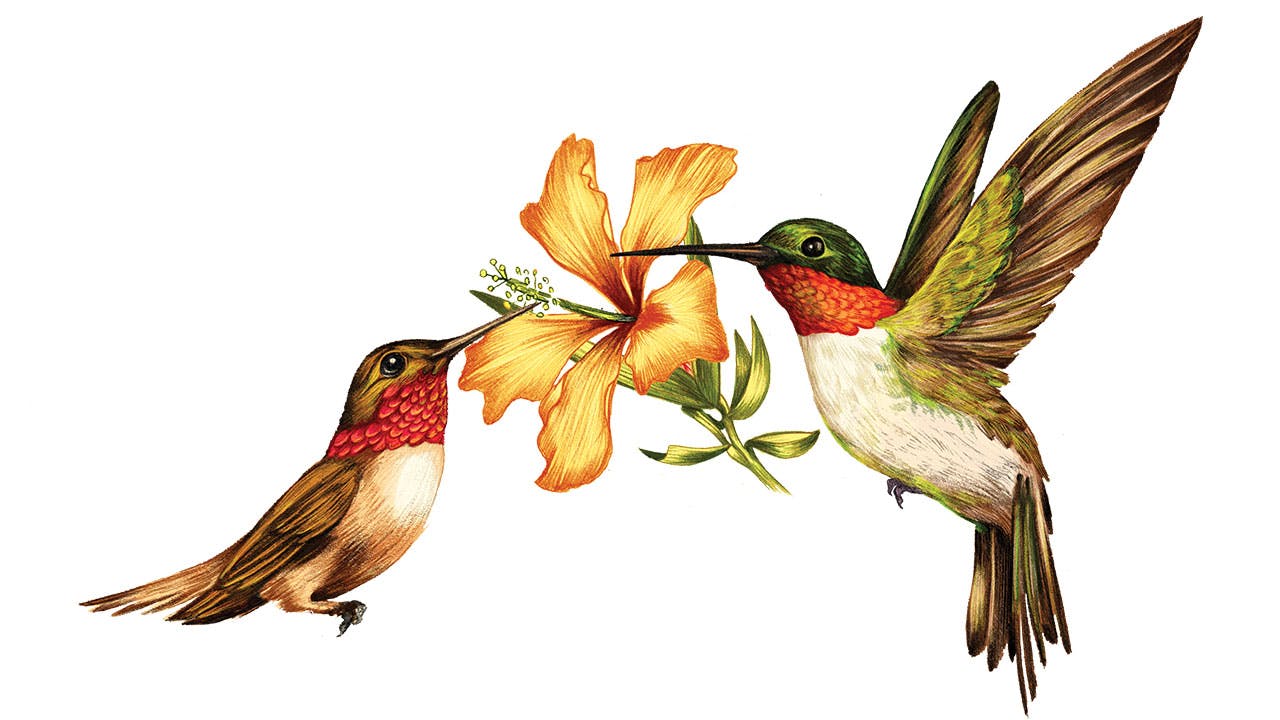
Rufous & Ruby-Throated Hummingbirds
In Adventures With a Texas Naturalist, his 1947 book reminiscent of Henry David Thoreau’s Walden, the late writer and outdoors enthusiast Roy Bedichek noted a few fanciful fables he’d heard about hummingbirds hitchhiking aboard the backs of migrating geese and beneath the wings of owls. Though he could not bring himself to believe the stories, Bedichek acknowledged their whimsical appeal. “The poor hummingbird,” he wrote, “so small, so frail, and such a long, long journey and cold, too. And here is a great big stork or goose, powerful, majestic, just ready to take off for the very place to which the hummingbird wants to go.”
In real life, huge numbers of hummingbirds migrate south through Texas each summer and fall on their own power, a remarkable feat given their tiny size. The longest traveler is the rufous hummingbird, a vividly colored bird (males are bright orange, with a red-gold neck, and females are green and orange) that can trek as far as four thousand miles, from Alaska to Mexico, and is often sighted in West Texas. The most plentiful, and most commonly seen in the eastern half of Texas and along the coast, is the ruby-throated hummingbird—so named for the male’s crimson chin—which flies from Eastern states and into Central America, often crossing the Gulf of Mexico in a single flight. Creatures of habit, with extremely good memories, hummingbirds often return to the same location from one year to the next, a whirring blur of color whose drone of wingbeats can sound, in the words of Bedichek, “like a fleet of approaching airplanes.”
When & Where To Go:
August and September. Head to West Texas, where peak migration for the rufous hummingbird occurs first, and attend the Davis Mountains Hummingbird Celebration (August 18–20, fortdavis.com/calendar.html), where you’ll catch it as well as varieties such as Allen’s, Lucifer, and magnificent. Then head to the coast, where peak migration for the ruby-throated hummingbird occurs a month later, and attend the HummerBird Celebration in Rockport and Fulton (September 15–18, rockporthummingbird.com).
Kemp’s Ridley Sea Turtles
For creatures born with a shell on their back, it’s ironic that the sea turtles of Texas face such tough times. Though they’ve rebounded from near extinction, thanks to federal regulations, protective measures in Mexico, and the dedicated work of naturalists along the three hundred miles of the state’s Gulf Coast, in recent years the five species of sea turtle found in Texas waters—the green, hawksbill, Kemp’s ridley, loggerhead, and leatherback—have faced no shortage of challenges, including the worst offshore oil spill in history, in 2010, and a brutal cold snap in 2011 that left thousands of them shocked and stranded on beaches from Galveston to South Padre Island. But things are looking up: this year, an encouraging number of Kemp’s ridley turtles—the rarest and most endangered of all sea turtles—have returned to state beaches to lay their eggs; as of press time, 185 nests have been reported along the coast.
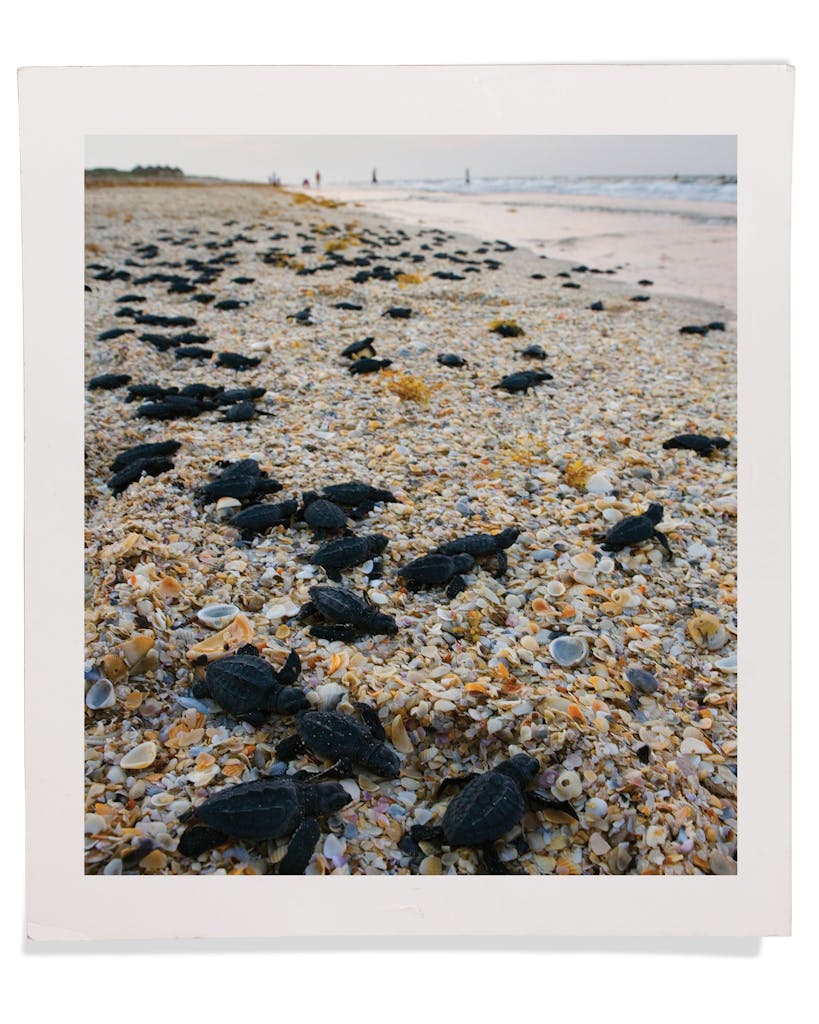 It used to be that, after a few migratory years in the ocean, the oval-shaped grayish-green turtles amassed in the surf by the hundreds before making a group landing, known as an arribada, to nest on the beach, but this no longer happens in Texas because of their decimated numbers. Instead, the seasonal movement to witness is in the other direction—from beach to ocean—with a hatchling release, when teams of scientists and volunteers help facilitate the frenetic journey of newly hatched turtles from their protected sandy nests into the water. Black, with little triangular heads, the hatchlings scurry toward the surf in a magical sunrise ceremony that is as nail-biting as it is hope-inducing.
It used to be that, after a few migratory years in the ocean, the oval-shaped grayish-green turtles amassed in the surf by the hundreds before making a group landing, known as an arribada, to nest on the beach, but this no longer happens in Texas because of their decimated numbers. Instead, the seasonal movement to witness is in the other direction—from beach to ocean—with a hatchling release, when teams of scientists and volunteers help facilitate the frenetic journey of newly hatched turtles from their protected sandy nests into the water. Black, with little triangular heads, the hatchlings scurry toward the surf in a magical sunrise ceremony that is as nail-biting as it is hope-inducing.
When & Where To Go:
Now through mid-August. Hatchling releases occur on Padre Island National Seashore, in front of the Malaquite Visitor Center (call or check online for projected release dates: 361-949-7163, nps.gov/pais/learn/nature/2016-nesting-season.htm), or on South Padre Island, at County Beach Access 3, half a mile north of the nonprofit Sea Turtle Inc. (956-433-5735, seaturtleinc.org).
